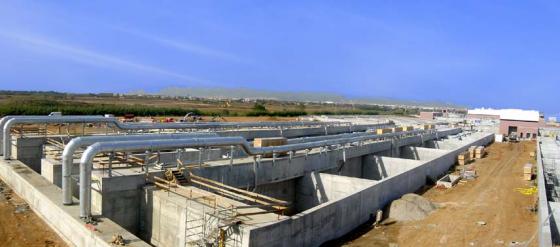Wastewater treatment
Activated Sludge (AS) systems have been applied and studied for a long time in wastewater treatments. Several models have been developed in order to understand and interpret these phenomena and the biological mechanisms involved. The IAWPRC formed in 1983 a task group to review and promote the development of AS models. The AS model No. 1 (ASM1) in 1987 become the major reference for many scientific projects and the subsequent models (ASM2, ASM3) playing an important role in practice [1]. These models are based on average composition of biomass (macroscopic models). This is probably a good approach as long as the biomass interacts primarily with cell external compounds. Bacterial communities in AS can store substrates as reserve polymers. The inclusion of storage polymers in a description of microbial growth processes makes important the choice of kinetic relations. In ASM2 and ASM3 cell internal storage compounds were also included. Since cell internal material can only interact with a single cell, which may act in a manner comparable to a batch system, applying kinetic models to the average composition of AS will not necessarily lead to the same model predictions as the sum of all individual behaviours (the simple biokinetic model is the storage-growth concept of heterotrophic bacteria in the ASM3, the translation of this from its macroscopic form to its microscopic form). The differences and consequences of model predictions based on microscopic (segregate) and macroscopic (lumped parameters) biokinetic models for AS systems are discussed by Gujer, and he suggests to start the research into the behaviour of individual bacteria. AS is composed of bacterial cells which may have individual cell composition and diverse physiological possibilities, and the real behaviours of the individual cells are responsible for the transformations and reactions in AS.

Figure: Biological reactors of wastewater treatment plant of Baix Llobregat
INDISIM is an individual-based simulation model to study bacterial cultures. The objective of this work is to develop a new extension of INDISIM, INDISIM-AS, to make possible the study of AS processes. This individual based model controls a group of bacterial cells of diverse prototypes using a set of random, time-dependent variables for each bacterium. These variables control its position in space, biomass, state in the cellular reproduction cycle and internal amounts of different substrates. The space where bacteria evolves is divided into cubes where the concentrations of different types of particles (substrates or residual compounds) are controlled. We model the behaviour of each cell taking into account: i) uptake of substrates, ii) metabolism of these particles following specific pathways, iii) reproduction, iv) loss of cellular viability, death and lysis. Processes as organic matter transformation, carbon and nitrogen mineralization, oxygen consumption, nitrification and denitrification result from the assumptions made on the properties of the individual bacteria.
Related publications
Related conferences
Share: